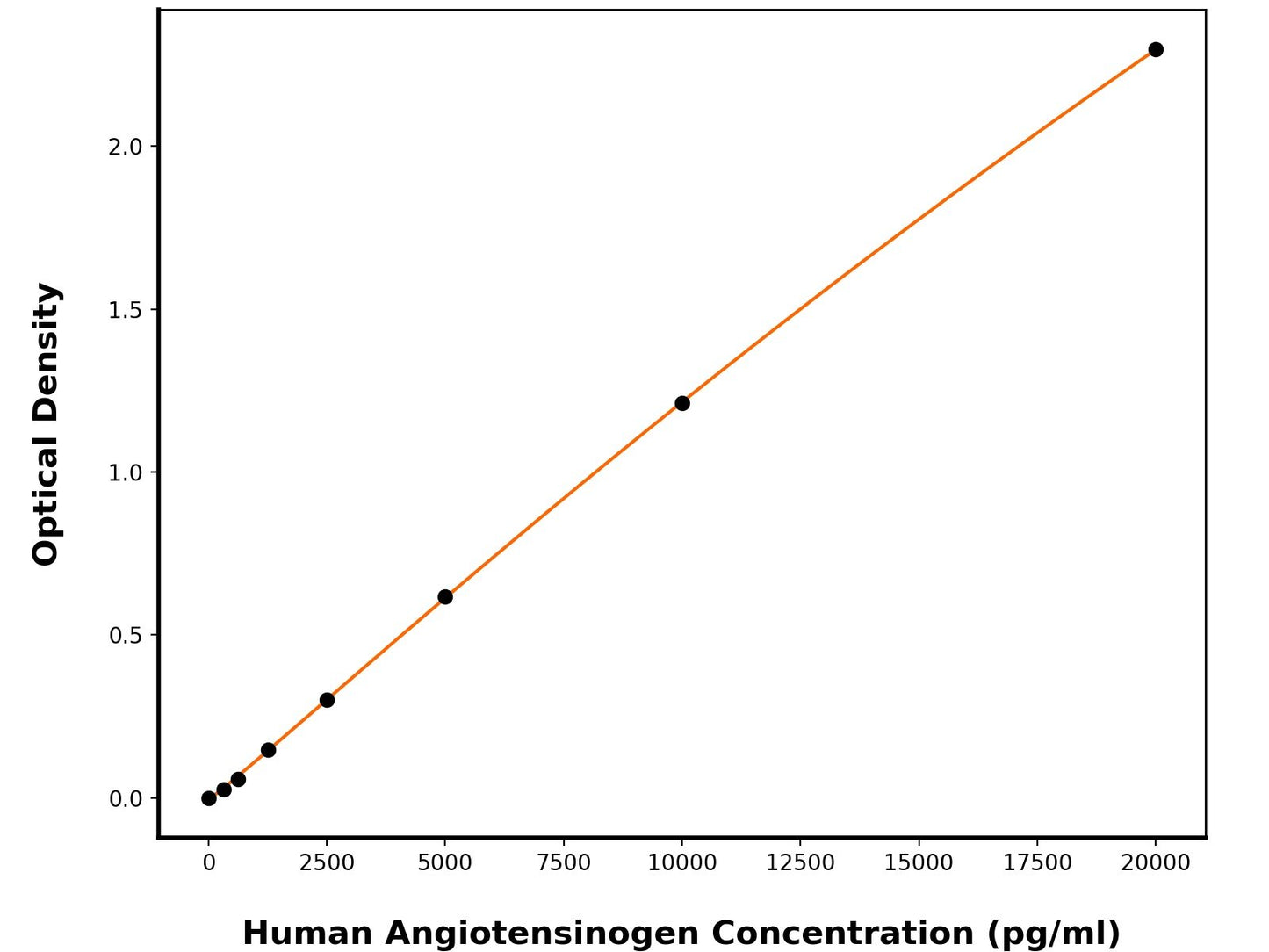1
/
of
1
Human Angiotensinogen (AGT) ELISA Kit
Human Angiotensinogen (AGT) ELISA Kit
This ELISA kit is designed to detect Human Angiotensinogen (Human AGT). The assay plate has been pre-coated with mouse anti-Human Angiotensinogen monoclonal antibody. When the sample containing Angiotensinogen is added to the plate, it binds to the antibodies coated on the wells. Then, a horseradish peroxidase conjugated mouse anti-Human Angiotensinogen Antibody is added to the wells and binds to Angiotensinogen in the sample. After washing the wells, substrate solutions are added, and the color intensity is directly proportional to the amount of Human Angiotensinogen present. The reaction is stopped by adding an acidic stop solution, and the absorbance is measured at 450 nm.
Catalog No:
BPE162
Regular price
$624.00 USD
Regular price
$480.00 USD
Sale price
$624.00 USD
Unit price
/
per
2 weeks
Couldn't load pickup availability
Product Details
Species Reactivity
Human
Sensitivity
148.81 pg/mL
Detection Range
312.5-20000 pg/mL
Sample Type
Serum, plasma, cell culture supernates
Incubation(s)
3.5 hour(s)
Research Areas
Signal Transduction, Cardiovascular, Metabolism, Cancer
Background
Angiotensinogen, also known as AGT and SerpinA8, is a member of the serpin family. It is an α-2-globulin that is produced constitutively and released into the circulation mainly by the liver. Angiotensinogen is a essential component of the renin-angiotensin system (RAS) and a potent regulator of blood pressure. Angiotensinogen can be schematically considered to consist of a combination of an angiotensin I (Ang I) function, located at the N-terminal end, and the presence of a serpin (serine protease inhibitor) structure at the opposite end. Angiotensinogen is cleaved into three chains: Angiotensin-1 (Ang I), Angiotensin-2 (Ang II), and Angiotensin-3 (Ang III). Angiotensin-1 is a substrate of ACE (angiotensin converting enzyme) that removes a dipeptide to yield the physiologically active peptide angiotensin-2. Angiotensin-1 and angiotensin-2 can be further processed to generate angiotensin-3, angiotensin-4. Angiotensin 1-7 is cleaved from angiotensin-2 by ACE2. Angiotensin-2 acts directly on vascular smooth muscle as a potent vasoconstrictor, affects cardiac contractility and heart rate through its action on the sympathetic nervous system. Defects in AGT are associated with susceptibility to essential hypertension and renal tubular dysgenesis (RTD). Several serpins (antithrombin, maspin, pigment epithelial-derived factor, and kallistatin) have been recently shown to exert an antiangiogenic activity, suggesting a common mechanism of endothelial cell proliferation and migration. Angiotensinogen/AGT and its renin-cleaved product, des(Ang I)AGT, are also angiogenesis inhibitors, both in vitro and in vivo at concentrations within the range of those observed in plasma. The Angiotensinogen products, that is angiotensin II and possibly angiotensin II-related products, have been found to act locally in modulating adipose tissue growth in an autocrine/paracrine manner. The transient or chronic overexpression of angiotensinogen in adipose tissue favors lipogenesis in adipocytes and leads to a 'vicious' circle whereby adipose tissue development is further increased.
Shipping Condition
Shipped on cold gel packs.
Storage Condition and Shelf Life
This product can be stored at 2-8C.
Analyte
Angiotensinogen
Regulatory Status
For Research Use Only

